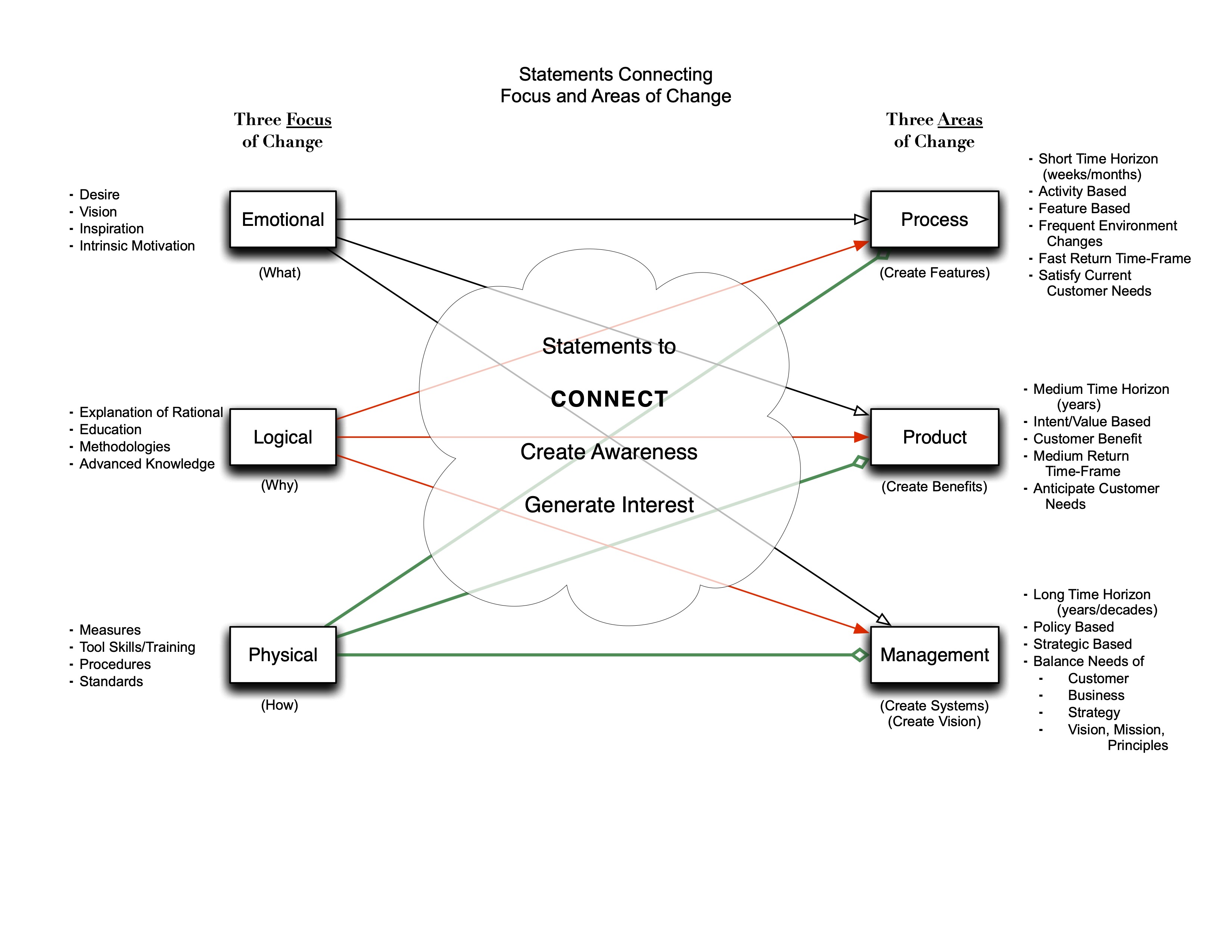LEAN Program - Structure Thoughts
Once, I was asked how I would structure a LEAN program. I had just finished guiding a Seattle Business Book Study Group through the review of William W. Scherkenbach’s book ‘Deming’s Road to Continual Improvement.’ In his book Bill commented about organizing a quality department along the lines of Physical, Logical, and Emotional. This question got me thinking about combining Scherkenbach’s concept of three focus of change with my own article ‘Improvement Triad: Processes, Products, and Management Practices.’ This is a brief collection of thoughts about these concepts. Scherkenbach’s Three Deployment Focus Areas: Emotional, or Promotion focus - This group would create the desire for improvement. This is the sales group. Focused on identifying and engaging change. • Sales oriented – benefits (not features), wants, worth – advertise – attract prospects – establish relationship – gather requirements • Creating desire • Coordinating communications – both internal and external • Keeper of the message • Keeper of the vision • Tap into ‘Intrinsic Motivation’ • Dependence, Independence, and Interdependence Logical – Profound Knowledge - Focused on Education (knowledge based) • Stay at the cutting edge of quality methodologies • Advance questions that advance knowledge • Explanations of Rationale Physical – Quality Process – Front line efficiency & effectiveness – Tactical, • Coordinates measurements (what is measured can be physical, logical, or emotional) • Audits, reports and standards • Keeper of Training (skills based) • Keeper of Policies, Procedures, standards and reporting relationships What would interactions of those areas of focus look like: "Physical - Logical" interactions - Science "Physical - Emotional" interactions - Art "Emotional - Logical" interactions - Psychology Interactions between all the three - HARMONY Improvement Triad: Processes, Products, and Management Practices (A Balancing Act) – for the full article see the link below Processes: • Activity based: a ‘thing’ is changed • Feature based • Short term time horizon • Results are quick and localized • Improvement is temporary because the environment changes • Assumes current product/service configuration satisfies customer requirements Products (and services) {in services, the process is the product} • Function based – the intent • Translates requirements into value • Method of providing a benefit to the customer • Method to satisfy the customer’s needs – current, perceived, not yet realized • Mid-range time horizon • Results are moderately quick and moderately localized Management Practices • Strategy based • Human activities and effort based • Create an environment of learning and cooperation • Long-term time horizon • Results are long to become visible • Results are wide spread – throughout the organization • Results are deeply rooted in the culture of the organization • Focused on long-term results and long-term efforts • Based on the organization’s values and ethics • Influence the social and economic well-being of the organization Imagine what a LEAN program would look like with these concepts!
